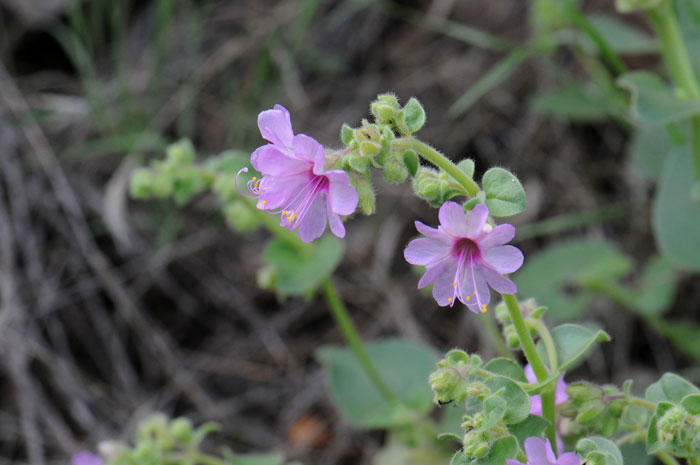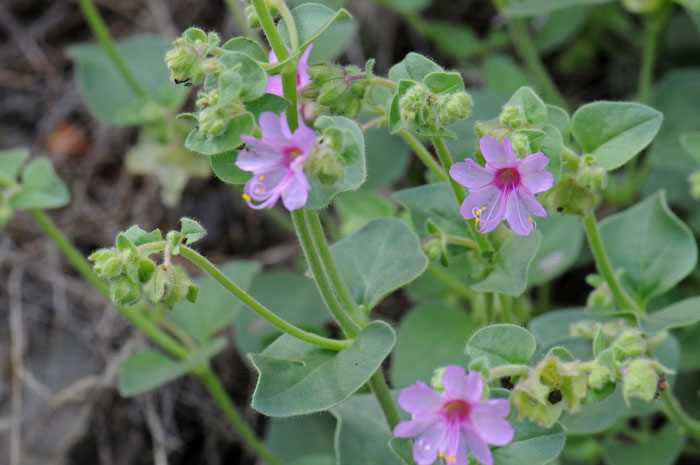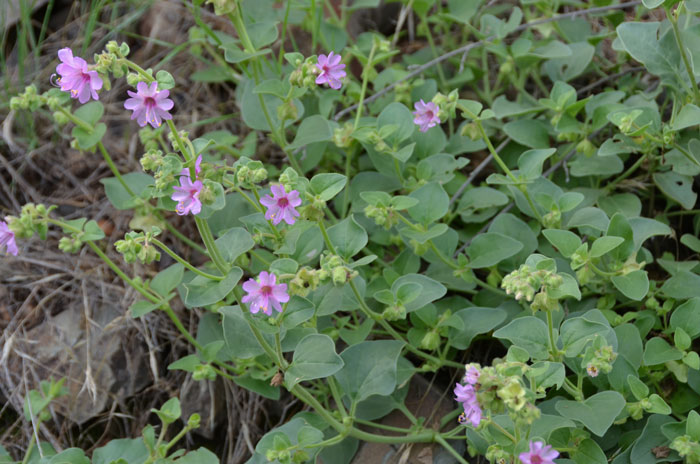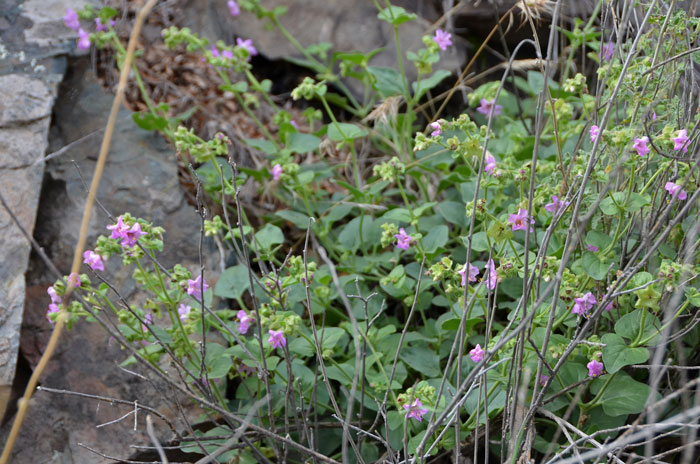Mirabilis pumila, Dwarf Four O'clock




Scientific Name: Mirabilis pumila
Common Name: Dwarf Four O'clock
Also Called:
Family: Nyctaginaceae, Four O’clock Family
Synonyms: (Oxybaphus pumilus, Allionia pumila)
Status: Native
Duration: Perennial
Size: Up to 18 inches or so.
Growth Form: Forb/herb; stems are ascending and spreading or trailing, covered with short pubescence, often glandular hairy.
Leaves: Green; glandular hairy, triangular or broadly ovate.
Flower Color: Pale pink; pubescent, "flowers" (perianth) 2 or 3 originating from leaf axils from cup-shaped involucre, club-shaped fruit in papery bracts.
Flowering Season: June to September.
Elevation: 3,000 to 7,500 feet.
Habitat Preferences: Dry, rocky places.
Recorded Range: Dwarf Four O'clock is found in the southwest United States in AZ, CA, NV, UT and NM. It is also native to Baja California and northwest Mexico. In Arizona it is found in the northern, central and south central parts of the state with few records in the southwest part of the state.
North America & US County Distribution Map for Mirabilis pumila.
U.S. Weed Information: No information available.
Invasive/Noxious Weed Information: No information available.
Wetland Indicator: No information available.
Threatened/Endangered Information: No information available.
The Plant List includes 224 scientific plant names of species rank for the genus Mirabilis. Of these 63 are accepted species names.
Comments: Dwarf Four O'clock is similar in appearance to Desert Wishbone-bush (Mirabilis laevis).
Also see in Southwest Desert Flora; Scarlet Four O'clock, Mirabilis coccinea, Desert Wishbone-bush, Mirabilis laevis, and Colorado Four O'clock, Mirabilis multiflora.
Mirabilis coccinea is or has been in the recent past used as a dermatological aid (Kayenta Drug). See ethno-botanical uses at Native American Ethnobotany, University of Michigan, Dearborn.

